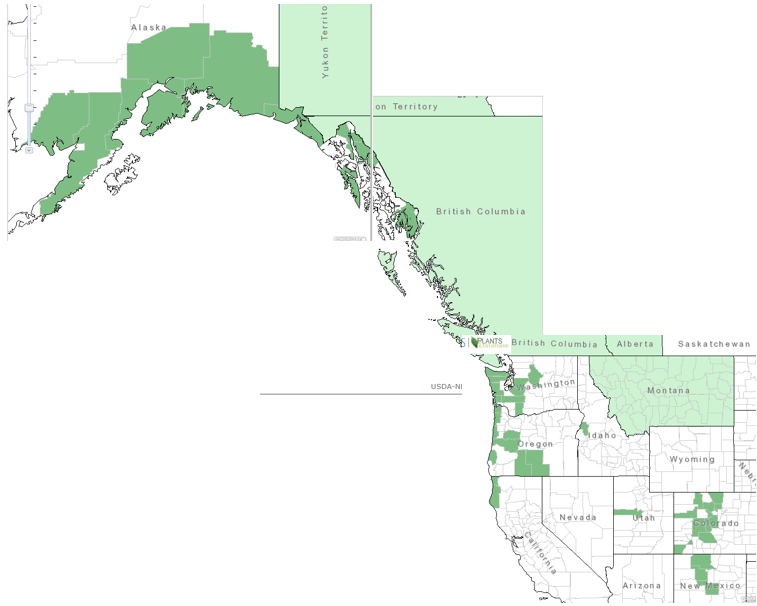Trailing Black Currant The Currant Family—Grossulariaceae
Ribes laxiflorum Pursh
(rye-BEEZ Lax-ih-FLOOR-um)
Names: Trailing Black Currant is also known as Spreading Currant. Laxiflorum means loose-flowered.
Distribution: It is found from southern Alaska to northwestern California, mostly west of the Cascades and along the coast; it can also be found in isolated areas of the Rocky Mountains, from Alberta to New Mexico, more frequently in Colorado. It also is native to Siberia.

Distribution of Trailing Black Currant from USDA Plants Database
Growth: This species usually trails or spreads along the ground, reaching less than 3 feet (1m); but it can grow, vine-like, up to 21 feet (7m) tall.
Habitat: It grows in in dense woods and wet, coastal forests and mountain slopes.
Diagnostic Characters: Leaves have 5 sharp-pointed lobes with toothed margins; they are heart-shaped at the base, smooth on top, and hairy-glandular below, with a strong odor when bruised. Six to twenty greenish-white to reddish purple flowers are borne on ascending or erect clusters. Fruits are purplish-black berries with glandular hairs and a waxy bloom.
In the Landscape: This species has potential to perform well as a groundcover in the garden.
Phenology: Bloom time: Late March-early May; Fruit ripens: Summer.
Propagation: Methods are likely to be the same as for other currants.
Use by People: The berries were eaten fresh, boiled or as preserves by native tribes. An infusion of the roots or branches was used to make an eyewash. The bark was boiled and used as a cold medicine and for tuberculosis. The stems were used for pipe stems.
Use by Wildlife: The berries are enjoyed by birds.
Links:
Consortium of Pacific Northwest Herbaria
WTU Herbarium Image Collection, Plants of Washington, Burke Museum
E-Flora BC, Electronic Atlas of the Flora of British Columbia
Jepson Eflora, University of California
Ladybird Johnson Wildflower Center
Native American Ethnobotany, University of Michigan, Dearborn
